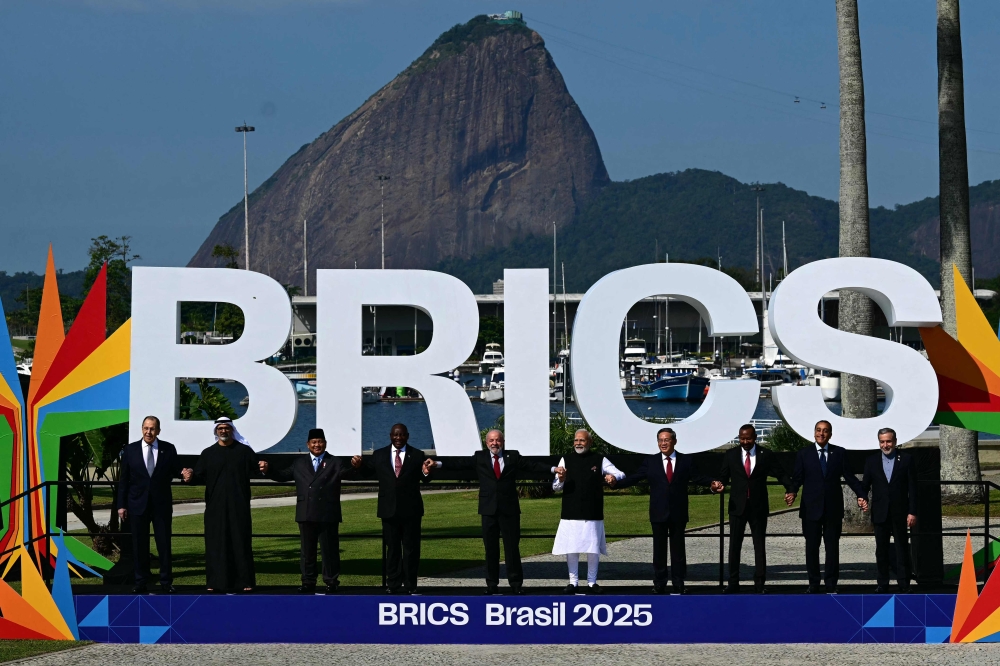AUGUST 17 — The much-anticipated Alaska Summit between US President Donald Trump and Russian President Vladimir Putin has failed to deliver a breakthrough on Ukraine.
Instead of producing even a framework for dialogue, the summit reinforced entrenched positions.
Putin reiterated his long-standing demand that Ukraine withdraw from four partially occupied regions — Donetsk, Luhansk, Kherson, and Zaporizhzhia — and abandon its aspirations of joining Nato.
Ukrainian President Volodymyr Zelensky, however, has categorically rejected such terms, arguing that ceding territory would only embolden Russia to strike again in the future, just as it did in 2022 after the illegal annexation of Crimea in 2014.
Trump, usually known for his unfiltered remarks, remained conspicuously silent as Putin spoke for nearly eight minutes.
This silence was as telling as the Russian president’s words. It suggested either a lack of consensus within Washington or a strategic ambivalence in how the United States wishes to position itself vis-à-vis Russia and Europe.
For many observers, the Alaska Summit exposed the limits of bilateral great-power bargaining when the underlying causes of conflict — territory, sovereignty, and security guarantees — remain non-negotiable.
Yet, even as the stalemate in Alaska deepens, attention is already shifting to the upcoming East Asian Summit (EAS) in Kuala Lumpur. Unlike Alaska’s narrow focus, the EAS brings together not only the United States and Russia but also China, India, Japan, Australia, and the ten Asean states.
What makes this year’s summit epochal is the unprecedented presence of all five Brics leaders — President Xi Jinping of China, Prime Minister Narendra Modi of India, President Luiz Inácio Lula da Silva of Brazil, President Vladimir Putin of Russia, and President Cyril Ramaphosa of South Africa — alongside Donald Trump. Never before has the EAS convened such a dense constellation of global power.
This convergence transforms Kuala Lumpur into more than a regional host; it becomes the diplomatic crossroads where the rules of trade, technology, and tariffs will be tested.
For Brics, the challenge is to project a united voice on economic sovereignty and resist being cornered by unilateral American tariffs.
For Trump, the challenge is to secure a minimal tariff regime that satisfies his domestic political base while avoiding an outright trade war with five major powers who, collectively, represent nearly half of the global population and a third of global GDP.

For Brics, the challenge is to project a united voice on economic sovereignty and resist being cornered by unilateral American tariffs. — AFP pic
The central question is whether Asean, as convener of the EAS, can seize this moment to anchor a new framework for dialogue. Unlike Europe, where Nato and the EU dominate, Asia has no single hegemonic institution.
The strength of Asean lies in its convening power and its ability to set agendas without threatening the sovereignty of its participants.
The EAS reflects this tradition of consensus-building. But consensus must now rise to the level of breakthrough if Kuala Lumpur is to be remembered as more than a ceremonial host.
The stakes could not be higher. If Brics leaders and Trump fail to hammer out even a minimal tariff regime, the world risks entering another spiral of economic fragmentation. Already, Trump’s tariff policies have unsettled global markets, pressuring allies and rivals alike.
The Brics, for their part, have long advocated reducing dependence on the US dollar and challenging Washington’s monopoly over financial rules. Yet confrontation without compromise risks destabilising not only global supply chains but also the fragile growth trajectories of emerging economies.
Here lies Asean’s strategic opportunity. By positioning itself as a mediator between Trump’s protectionist instincts and Brics’ push for economic sovereignty, Asean can demonstrate its relevance at a time when the global order is in flux.
It must not merely facilitate polite conversations but instead encourage concrete deliverables: a roadmap for tariff reduction, mechanisms for currency settlement that do not destabilise global finance, and frameworks for sustainable investment across Asia and beyond.
The symbolism is powerful. In Alaska, Trump could not even nudge Putin toward flexibility on Ukraine. In Kuala Lumpur, however, he will face not one but five leaders of Brics, each bringing their own grievances, ambitions, and demands.
For Trump, the test is whether he can move from unilateral posturing to multilateral bargaining. For Asean, the test is whether it can shepherd this convergence into outcomes that temper confrontation with compromise.
If successful, the EAS could mark the beginning of a new economic architecture — one that acknowledges US concerns about market access and intellectual property while also addressing Brics’ demands for fairer trade and greater autonomy from Western financial dominance.
If it fails, the world may splinter further into rival blocs, each imposing its own tariffs, currencies, and technological standards.
This is why the East Asian Summit in Kuala Lumpur is not just another regional gathering.
It is an epochal event. The simultaneous presence of Trump and all five Brics leaders ensures that the EAS will be scrutinised not only for its communiqués but for its capacity to chart the contours of global economic governance.
The ability to hammer out even a minimal tariff regime would send a powerful signal that dialogue can still shape the future of the world order.
For Asean, this is the defining moment. The Alaska Summit showed what happens when two powers lock horns without compromise.
The East Asian Summit offers, indeed, Prime Minister Anwar Ibrahim, something different: a chance for a collective breakthrough.
This is Anwar’s X moment in time. One filled with known knows and unknown unknowns.
If Kuala Lumpur succeeds, it will demonstrate that Asia is no longer just a theatre of global competition but a stage upon which the architecture of the future world order is negotiated and defined.
* Phar Kim Beng is a professor of Asean Studies and Director of the Institute of Internationalization and Asean Studies at the International Islamic University of Malaysia.
** This is the personal opinion of the writer or publication and does not necessarily represent the views of Malay Mail.






